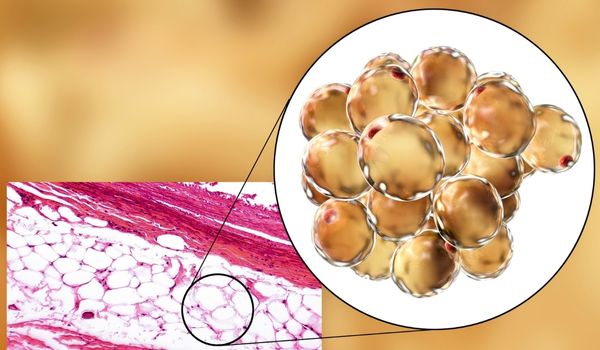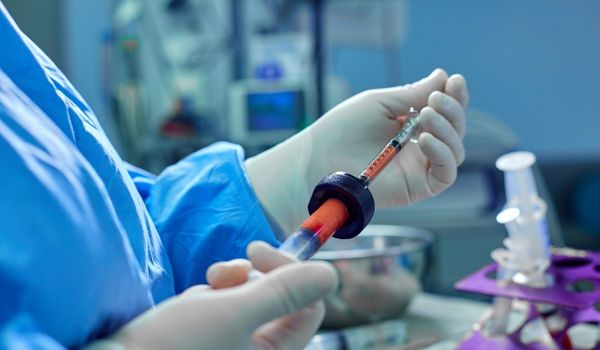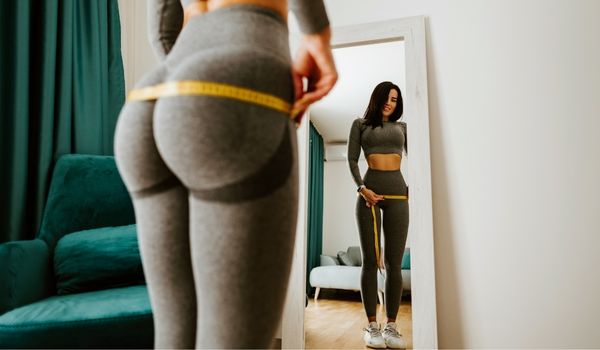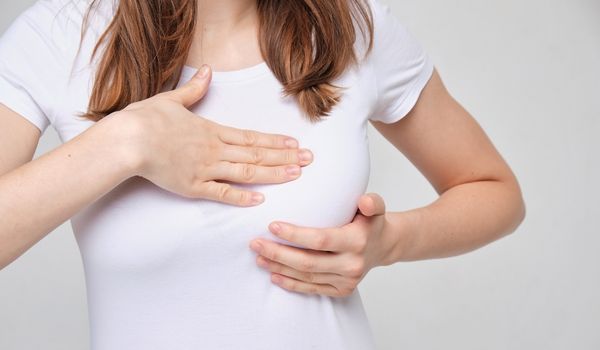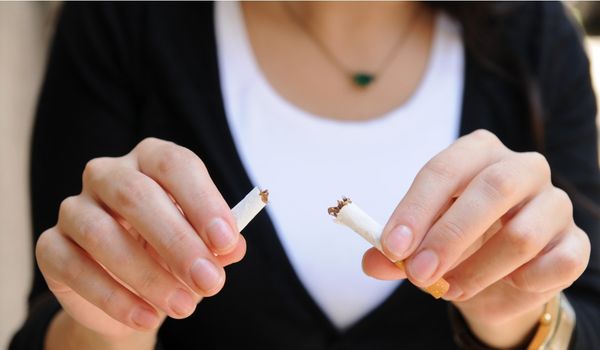
Fat Necrosis Is a Potential Complication That Can Occur after Cosmetic Fat Grafting
For patients who receive autologous fat transfers, fat necrosis is a risk. But is it a dangerous one? And can it be prevented?
Plastic surgeons use fat as a natural filler to add volume and fix contour deformities in the breasts, face, and butt. Sometimes, the grafted fat tissue dies after a fat transfer surgery. That is known as fat necrosis.
Fat necrosis is not a dangerous complication and does not increase the risk of breast cancer. However, it can cause lumps in the face, butt, and breasts that may become painful and could lead to contour changes.
Learn more about fat necrosis, what causes it, how to treat it, and what you can do to avoid it.
What Is Fat Necrosis?
Fat necrosis is the death of fat tissue (adipose tissue) after fat cells are damaged by injury, trauma, surgery, or radiation therapy. A collection of dead fat cells will feel like a bump or lump under the skin.
Lumps caused by necrotic fat are benign (not cancerous) and can appear almost anywhere in the body.
Fat necrosis can happen after an autologous fat transfer (autologous fat grafting) if the transferred fat cells are deprived of oxygen.
If the transferred fat doesn’t receive enough oxygen, it starts to die. Eventually, the dead fat turns into scar tissue or cysts that feel like round lumps under the skin.
The lumps formed after the death of adipose tissue are usually solid and firm. However, in some cases, fat necrosis can result in soft lumps under the skin.
There are different types of fat necrosis lumps following fat grafting:
- Oil cysts: fluid-filled sacs that feel like soft and squishy lumps under the skin
- Scar tissue nodules: firm and hard lumps under the skin. They can be moveable or fixed and small or large
Although fat tissue death or necrosis sounds ominous, it’s not a life-threatening complication and is usually easily managed.
What Cosmetic Procedures Can Cause Fat Necrosis After Fat Transfer?
Fat necrosis can occur after plastic surgery procedures involving fat grafting, such as:
- Brazilian butt lift (BBL): fat necrosis in the buttocks is one of the most common complications after Brazilian butt lift surgery. One survey reported fat necrosis in more than 23% of patients after fat injections into the buttocks
- Breast augmentation or reconstruction with fat transfer: breast fat necrosis is common after autologous fat transfer for breast augmentation or reconstruction surgery
- Facial fat grafting: although rare, fat necrosis can occur after fat transfer to the face. Facial fat transfer is also known as facial lipofilling, facial fat grafting, and facial fat rejuvenation
What Are the Symptoms of Fat Necrosis After Fat Transfer Surgery?
A lump under the skin is the most common sign of fat necrosis after BBL and other cosmetic procedures involving fat transfer. You might feel one or more bumps under the skin, which can be firm or soft.
Other signs of fat necrosis after fat grafting include:
- Pain and discomfort, or tenderness in the area around the lump
- Redness or bruising around the lump
- Changes in the contours of the breast, butt, or cheeks
What Causes Fat Necrosis after Fat Transfer Surgery?
Fat necrosis can occur after fat transfer because the grafted fat doesn’t receive enough oxygen.
Fat grafting involves harvesting fat by liposuction from one part of the body and then injecting it into another. The transferred fat then develops its blood supply from the surrounding tissue.
If the blood supply to the newly injected fat cells is disrupted, the adipose tissue starts to die. Most of the time, the dying fat cells form scar tissue and consequently turn into firm lumps under the skin.
Alternatively, the fat cells start to degenerate and release their content instead of forming scar tissue. Ultimately, the degenerated fat forms soft lumps under the skin, known as oil cysts.
Several factors can limit the blood flow to the transferred fat, such as:
- Pressure: fat necrosis can occur if the patient applies direct pressure on the area where the fat was injected soon after the fat grafting procedure. The pressure restricts the blood flow and decreases the oxygen levels transferred to the newly injected fat cells. This most commonly occurs after a Brazilian butt lift (BBL). If patients sit down on their buttocks too soon after a BBL, the direct pressure on grafted fat can lead to fat necrosis
- Large volumes of grafted fat: the fat needs to be evenly distributed when injected so that all the areas of the grafted fat can shortly develop a blood flow. Injecting large amounts of fat at once makes it more difficult to distribute it evenly. Consequently, if very large volumes of fat are injected into a single area, there’s a higher risk of fat necrosis
- The harvesting and preparation of fat: the survival of fat grafts also depends on how the fat is harvested, purified, and prepared before transfer. Effective purifying and centrifugation can remove all residual blood or anaesthesia liquid from the harvested fat. Fat necrosis can occur if the fat isn’t purified well before its transfer
It takes time for the fat tissue to become necrotic after autologous fat grafting. Fat necrosis can happen weeks to months after a breast fat transfer, butt fat transfer, or facial lipofilling.
How to Treat Fat Necrosis after Fat Transfer?
Consult your surgeon if you feel lumps or bumps in your breasts, butt, or face following fat grafting.
A physical examination followed by an MRI, ultrasound, mammogram, and sometimes biopsy can help confirm a fat necrosis diagnosis.
Fat necrosis doesn’t always require treatment; sometimes, all you have to do is wait for it to shrink and resolve on its own.
On the other hand, lumps in the butt, breasts, or face that persist for a long time after a fat transfer can be removed by aspiration or (rarely) surgical excision.
1. Home remedies for fat necrosis
You can speed up the breakdown of the lumps resulting from fat necrosis by manually massaging the affected area daily.
Ask your surgeon about the instructions for massaging your face, breasts, and butt after fat transfer surgery.
2. Needle aspiration of necrotic fat
If the fat necrosis contains only fluid (oil cysts), your surgeon can use a thin, hollow needle to drain the soft lump and relieve any discomfort.
Needle aspiration can only get rid of soft fat necrosis lumps after fat grafting surgery, but not firm ones.
3. Surgical excision of necrotic fat
When the necrotic fat develops into a solid mass/lump under the skin, your surgeon can remove it by surgically cutting it out (surgical excision).
If the firm lumps are small, then fat necrosis can be fixed by surgical excision alone.
Otherwise, if the dead fat lumps are big, their removal might leave a hollow space that ruins the contours of the face, breast, or butt.
In these cases, surgical excision is combined with an additional fat transfer to fill the contour defects created by removing the necrotic fat nodules.
How to Prevent Fat Necrosis after Fat Transfer?
You can’t entirely prevent fat necrosis after fat transfer surgery, but you can minimise its risks.
These tips can help you avoid fat tissue death after getting cosmetic fat injections:
- Stop smoking: smoking restricts blood flow and limits the amount of oxygen reaching the tissue. Avoid smoking during your recovery from a fat transfer surgery to give your fat grafts a higher chance of survival
- Follow your surgeon’s instructions: follow your surgeon’s instructions to the letter, especially those concerning standing and sitting after a Brazilian butt lift. The instructions will help you avoid exposing the transferred fat to direct pressure that can damage the new fat grafts
- A highly experienced plastic surgeon: even with the most experienced surgeon, fat necrosis can still occur after a fat transfer procedure. Nonetheless, a highly skilled surgeon specialising in fat grafting will have sufficient experience to harvest the fat, purify it, and inject it with a minimum risk of complications
Is Fat Necrosis A Dangerous Complication?
If you get fat necrosis after a fat transfer surgery, it’s usually not a big deal. Fat tissue death is not as bad as its name sounds; it’s usually not a dangerous complication.
In some cases, the lumps can shrink and resolve without any treatment. And in other cases, simple needle aspiration can successfully remove the liquid fat necrosis.
In rare cases, patients with fat necrosis may need another surgery – surgical excision can successfully treat the dead fatty tissue.
Although fat necrosis is not a dangerous health concern, many patients become worried when they feel lumps under the skin, especially in the breasts. That’s because lumps and bumps on the body can be a sign of cancer. Nonetheless, researchers have reassured that the fat necrosis lumps are not cancerous and do not turn into cancer or increase its risk.
Fat necrosis is a risk of autologous fat transfers. However, it’s a risk that’s easily manageable and sometimes even preventable.
Reach out to your plastic surgeon if you feel a hard or soft mass under your skin after getting fat grafts in your butt, breasts, or face. After your surgeon examines you, you may not need to do anything further, and the lumps disappear on their own. Or else, you might need additional imaging tests and lump removal procedures.
Medical References about Fat Necrosis after Fat Transfer
- Management of Fat Necrosis after Autologous Fat Transplantation for Breast Augmentation
- Facial Fat Necrosis Following Autologous Fat Transfer and its Management – PMC
- Breast Fat Necrosis – StatPearls – NCBI Bookshelf
- Breast Reshaping with Fat Grafting Gallery by Dr. Guy Watts
- Breast Augmentation Sydney – Breast Implants by Dr Bish Soliman
- Fat Transfer to Breast Before and After Photos by Dr Carmen Munteanu
- Natural Breast Augmentation with Your Own Fat in Sydney by Dr Kernohan Plastic Surgeon
- Natural Breast Enlargement – Autologous Fat Transfer to Breasts in Auckland New Zealand by Dr Gittos

